Structural Design and Optimization of Separated Air-Rib Tents Based on Response Surface Methodology
Abstract
:1. Introduction
2. Numerical Calculation Model of Separate Air-Ribbed Tent
3. A Single Parameter Analysis of Separated Air-Rib Tent
3.1. Analysis of Von Misses Stress Results
3.2. Analysis of Displacement Results
4. Optimized Design of the Wind Ropes Parameters Based on the Response Surface Methodology
4.1. Optimization of Programmed Design
4.2. Analysis of the Results
5. Validation of the Results in the Optimum Conditions
6. Conclusions
Author Contributions
Funding
Institutional Review Board Statement
Informed Consent Statement
Data Availability Statement
Conflicts of Interest
References
- Jiang, C.; Shi, X. “Quick-create” architecture: The research mainly about tent, a kind of quick-build architecture. Huazhong Archit. 2010, 28, 69–72. [Google Scholar]
- Zhao, X. Experimental Study and Analysis on the Air-Inflated Arch. Master’s Thesis, Chang’an University, Xi’an, China, 2007. [Google Scholar]
- Huang, H.; Li, X.; Xue, S.; He, Y.; Li, J. Study on the structure selection of air-tight tent with air-supported and air-inflated composite structure. Build. Struct. 2021, 51, 577–582. [Google Scholar]
- Feng, Y.; Yan, W.; Yin, J.; Yang, F. Mechanical property analysis and test of air-rib inflatable tent. In Proceedings of the Celebrating the 80th Anniversary of Professor Liu Xiliang and the Proceedings of the Eighth National Symposium on Modern Structural Engineering, Beijing, China, 19–22 July 2008. [Google Scholar]
- Kaveh, A.; Rezaei, M. Optimum topology design of geometrically nonlinear suspended domes using ECBO. Struct. Eng. Mech. 2015, 56, 667–694. [Google Scholar] [CrossRef]
- Guo, X.; Li, Q.; Zhang, D.; Gong, J. Structural behavior of an air-inflated fabric arch frame. J. Struct. Eng. 2016, 142, 4015108.1. [Google Scholar] [CrossRef]
- Pilarska, D.; Maleska, T. Numerical analysis of steel geodesic dome under seismic excitations. Materials 2021, 14, 4493. [Google Scholar] [CrossRef] [PubMed]
- Nilson, B.; Roberto, D.; Lucas, S.V.; Key, F.L.; Diego, R. Dynamic behavior of the geodesic dome joints. Int. J. Comput. Appl. 2016, 140, 40–44. [Google Scholar]
- Cui, J.; Tang, Y.; Long, L. Wind-induced vibration analysis of a long-span framework membrane structure. Build. Struct. 2007, 37, 32–35. [Google Scholar]
- Wu, B.; Wu, Y.; Dai, J.; Sun, Y. Design and construction analysis of long-span dry coal shed cable arch truss. Build. Struct. 2021, 51, 546–555. [Google Scholar]
- Li, X.; Huang, H.; Xue, S.; He, Y.; Li, J. Study on mechanical behavior of air-tight inflatable tent structures. Spat. Struct. 2021, 27, 50–55+49. [Google Scholar]
- He, Z.; Ding, J.; Su, X. Characteristic of wind load and static wind effects analysis of membrane structure canopy roof of large-scale stadium. J. Tongji Univ. Nat. Sci. 2007, 8, 1019–1024. [Google Scholar]
- He, Z.; Ding, J.; Chao, S.; Xiao, X. Structural design of large-span pre-stressed truss shell system of Beijing university-table tennis gymnasium for the 2008 Olympic Games. Build. Struct. 2008, 3, 55–60. [Google Scholar]
- Wang, L. The Response Surface Method in Structural Optimization Study on the Application. Master’s Thesis, Shanghai Ocean University, Shanghai, China, 2018. [Google Scholar]
- Diniz, C.A.; Méndez, Y.; de Almeida, F.A.; da Cunha, S.S., Jr.; Gomes, G.F. Optimum design of composite structures with ply drop-offs using response surface methodology. Eng. Comput. 2021, 38, 3036–3060. [Google Scholar] [CrossRef]
- Betül, S.Y. Optimal design of automobile structures using moth-flame optimization algorithm and response surface methodology. Mater. Test. 2020, 62, 371–377. [Google Scholar]
- Rahul, N.; Ramachandran, K.I. Design and optimization of automotive energy absorber structure with functionally graded material. Mater. Today Proc. 2018, 5, 25640–25648. [Google Scholar]
- Zhao, J.; Li, J.; Huang, C. Multi-objective Optimization Model of Hydrodynamic Sliding Bearing Based on MOPSO with Linear Weighting Method. IAENG Int. J. Comput. Sci. 2021, 3 Pt 3, 48. [Google Scholar]
- Saka, M.; Optimum, P. topological design of geometrically nonlinear single layer latticed domes using coupled genetic algorithm. Comput. Struct. 2007, 85, 1635–1646. [Google Scholar] [CrossRef]
- Kaveh, A.; Amirsoleimani, P.; Dadras, E.A.; Rahmani, P. Frequency-constrained optimization of large-scale dome-shaped trusses using chaotic water strider algorithm. Structures 2021, 32, 1604–1618. [Google Scholar] [CrossRef]
- Holly; Liu, Q. Multi-Objective Optimization Theory and Continuous Method, 1st ed.; Science Press: Beijing, China, 2015. [Google Scholar]
- Chen, H.; Peng, C.; Tian, K.; Wang, L. Optimal design for truss structure shape based on response surface method. Chin. J. Eng. Des. 2018, 25, 457–464. [Google Scholar]
- Wang, Y.; Wang, C. Theory and application of response surface methodology. J. Minzu Univ. China (Nat. Sci. Ed.) 2005, 14, 236–240. [Google Scholar]
- Peng, K.; Li, X.; Peng, S.; Dong, L.; Yao, Y. Optimization of frame stope structure parameters based on response surface method in under-sea mining. J. Cent. South Univ. 2011, 42, 2417–2422. [Google Scholar]
- Zhan, Y.; Hou, Z.; Shao, J.; Zhang, Y.; Sun, Y. Cable force optimization of irregular cable-stayed bridge based on response surface method and particle swarm optimization algorithm. Bridge Constr. 2022, 552, 16–23. [Google Scholar]
- Zhu, Z.; Li, X.; Li, Z.; Chen, Q.; Cai, Y.; Peng, M. Optimization design of perforated panel for composite ships based on response surface methodology. Ship Sci. Technol. 2022, 44, 48–52. [Google Scholar]
- Cheng, D.; Cao, J.; Gao, P. Mechanical performance analysis of special-shaped columns strengthened with CFRP cloth strips. Archit. Sci. 2022, 9, 143–150. [Google Scholar]
- Li, Y.; Xie, Q.; Zhang, X.; Zhang, J. Cascading Failure Analysis of Transmission Tower-Line System under Strong Wind. Journal of Southwest Jiaotong University. Available online: http://kns.cnki.net/kcms/detail/51.1277.U.20221110.1233.004.html (accessed on 10 November 2022).
- Du, X.; Zhang, K.; Zhang, R.; Ye, T.; Yi, W.; Jiang, J. Dynamic Modeling and Analysis of Space Membrane Structure Based on Constant Strain Element. China Space Science and Technology. Available online: http://kns.cnki.net/kcms/detail/11.1859.V.20220829.1010.002.html (accessed on 29 August 2022).
- Li, Y. Study and Applications on Mechanical Properties of Membrane Materials and Structures. Master’s Thesis, Tongji University, Shanghai, China, 2007. [Google Scholar]
- Zhuo, X.; Dong, S. Cantilever erection method and analysis of construction internal forces for large-span spherical reticulated shells. J. Zhejiang Univ. (Eng. Sci.) 2002, 2, 36–39. [Google Scholar]
- Li, Q. Analysis on Inflation Deployment and Deflation Collapse of Air-Inflated Fabric Arch Structures. Master’s Thesis, Shanghai Jiaotong University, Shanghai, China, 2016. [Google Scholar]
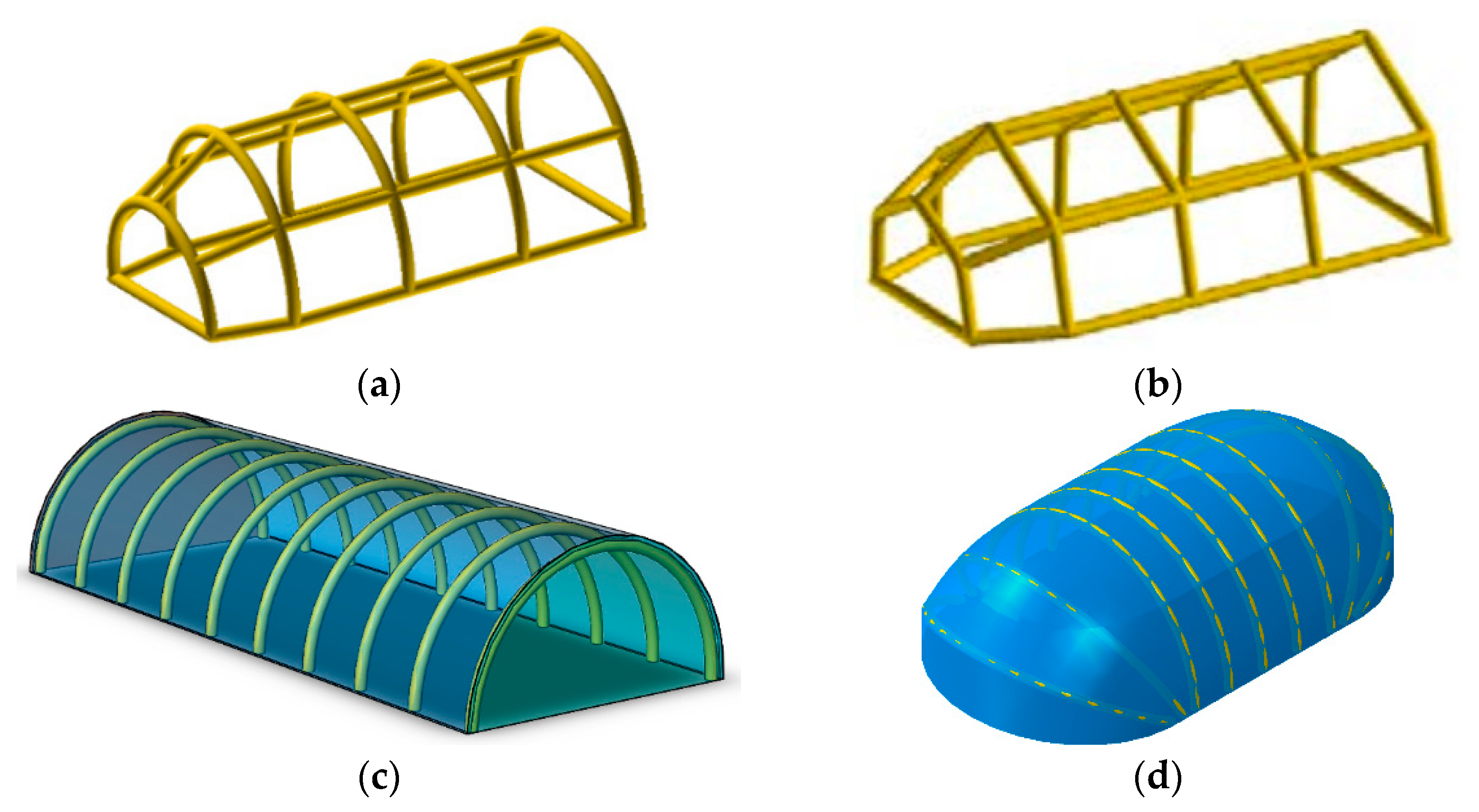

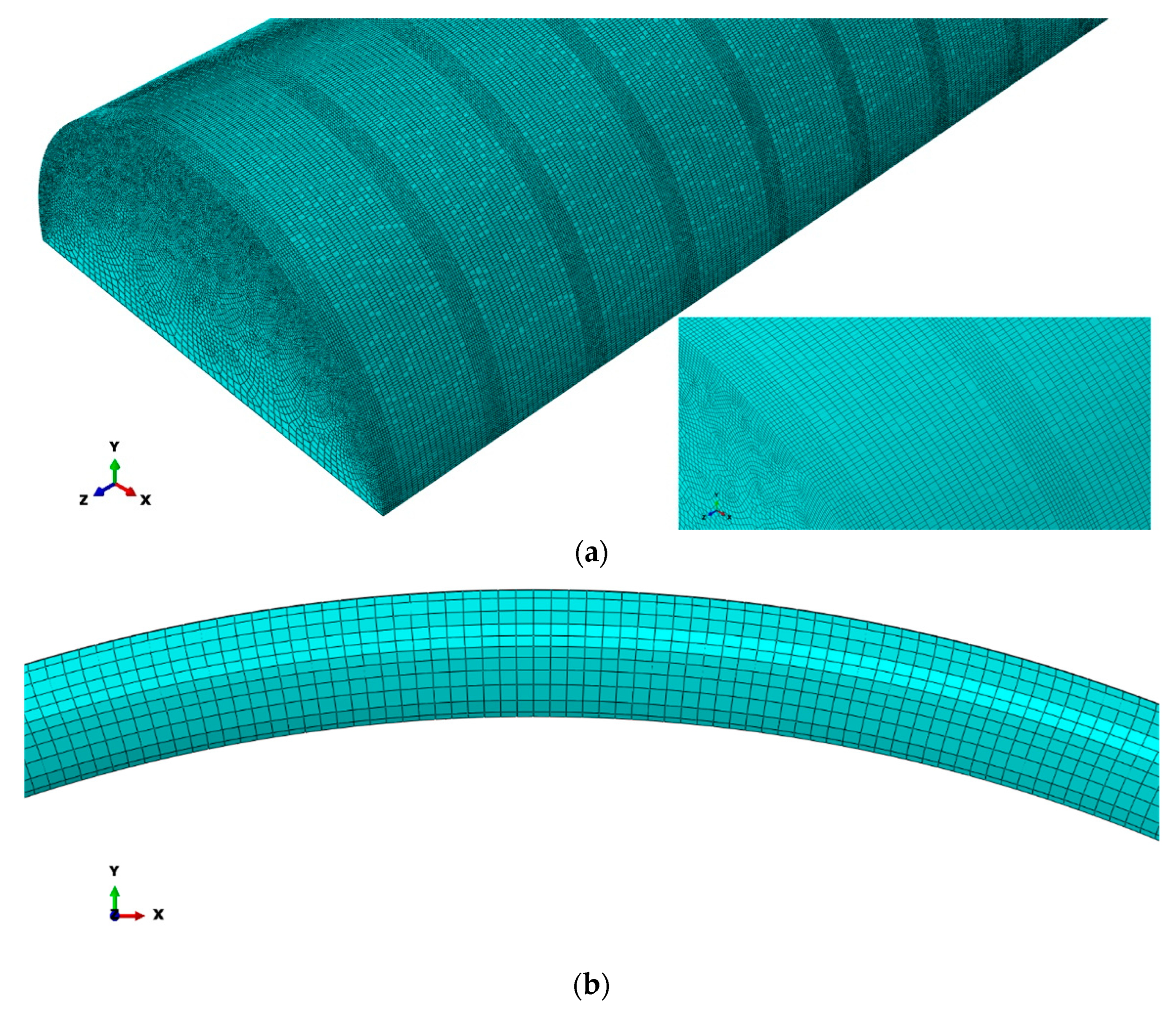
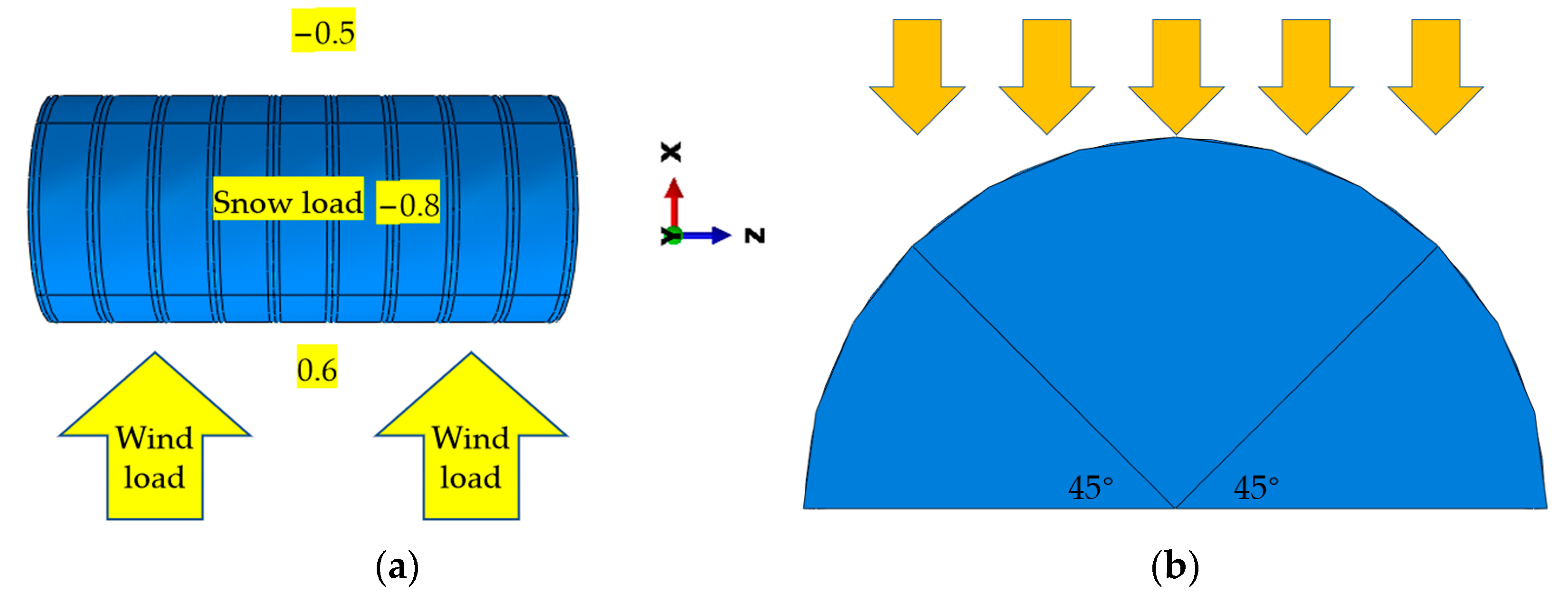
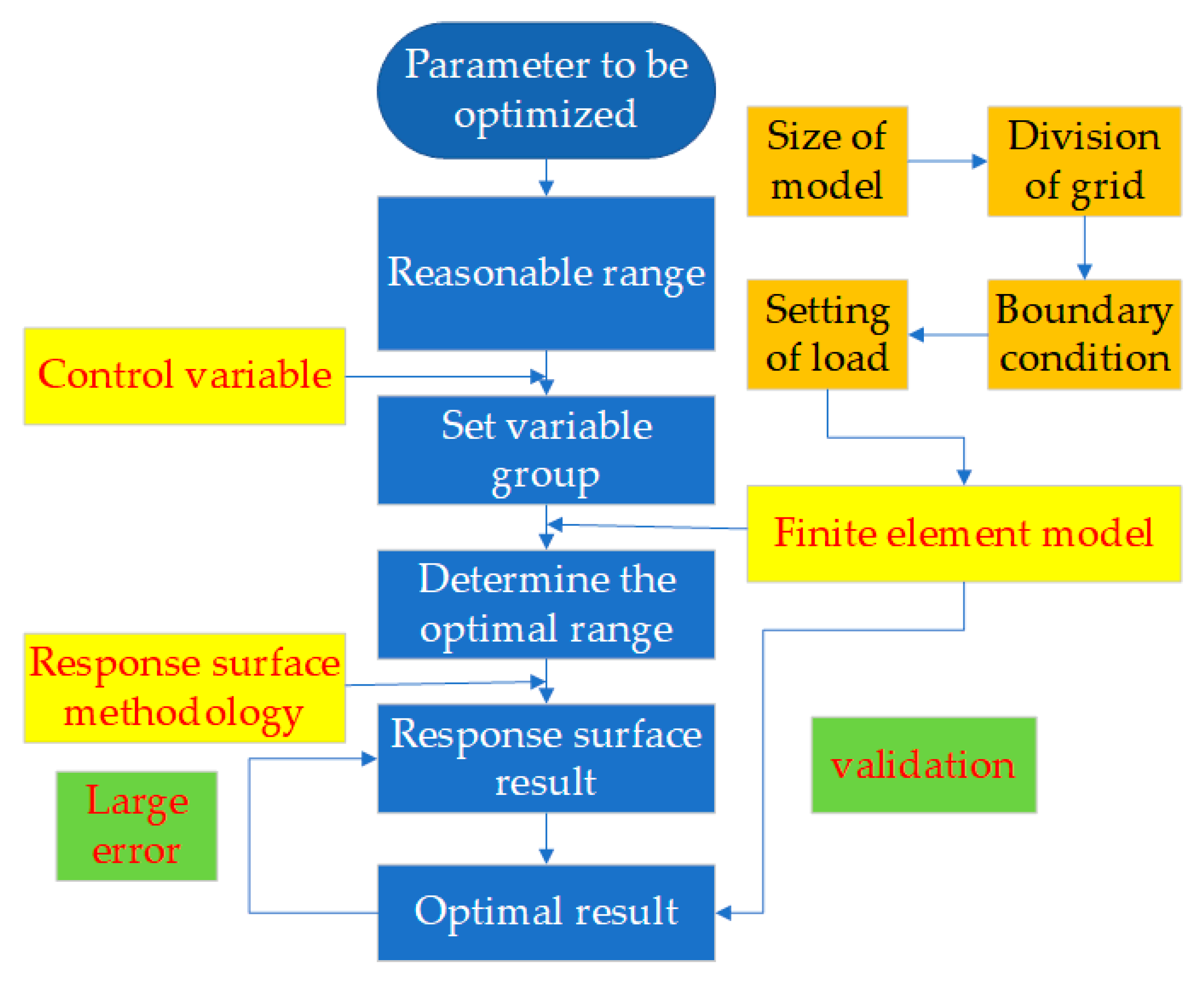
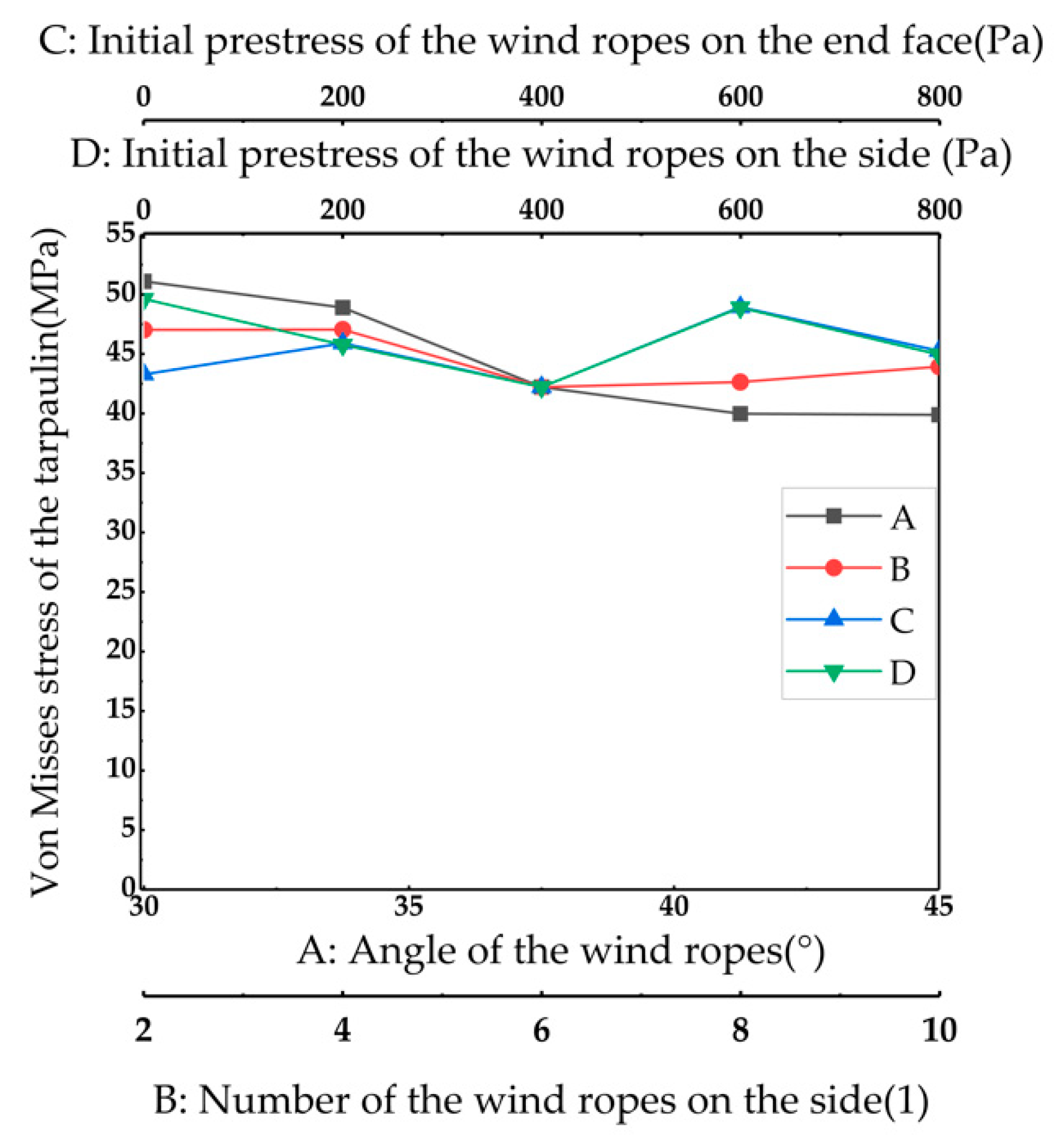

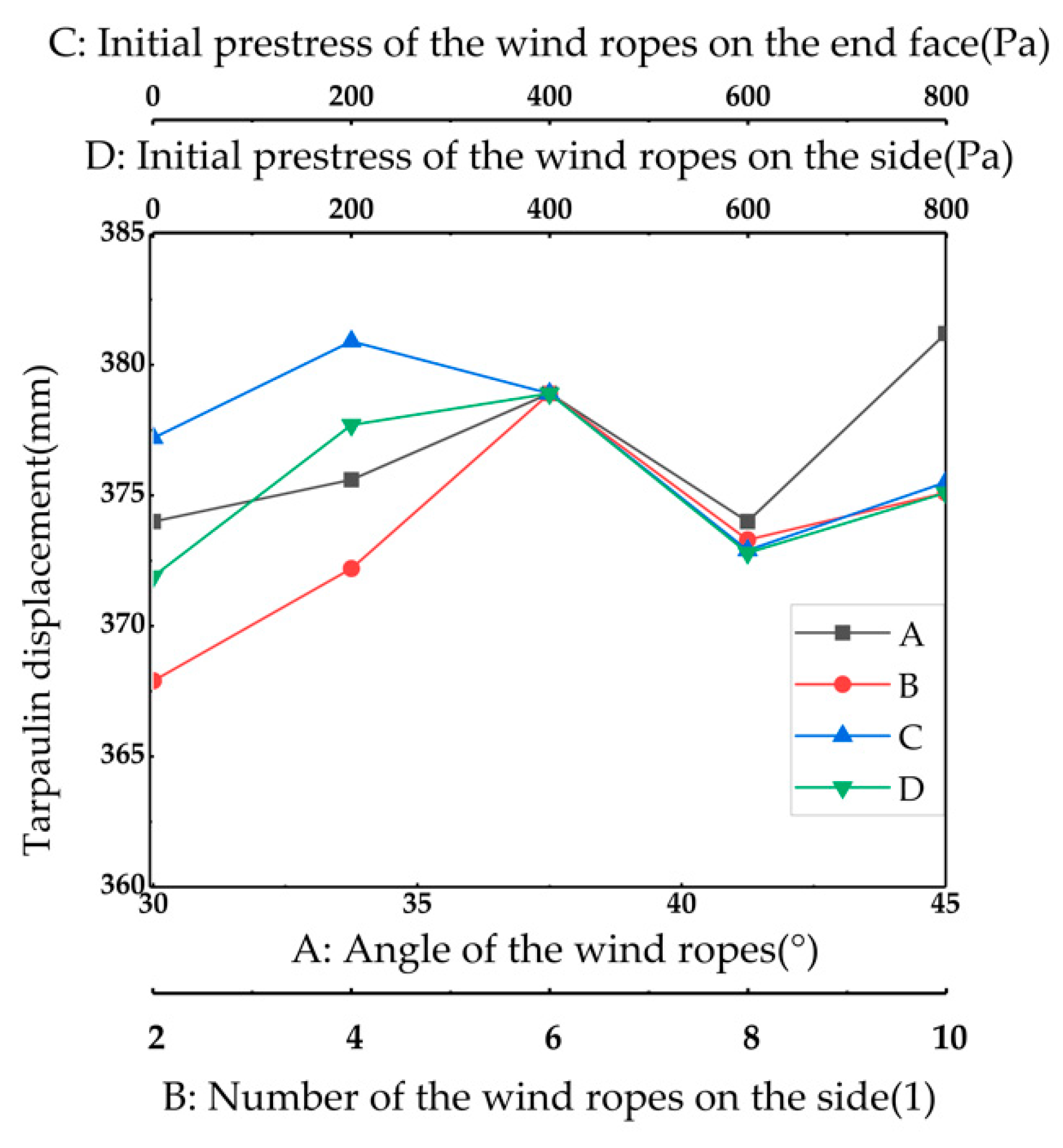
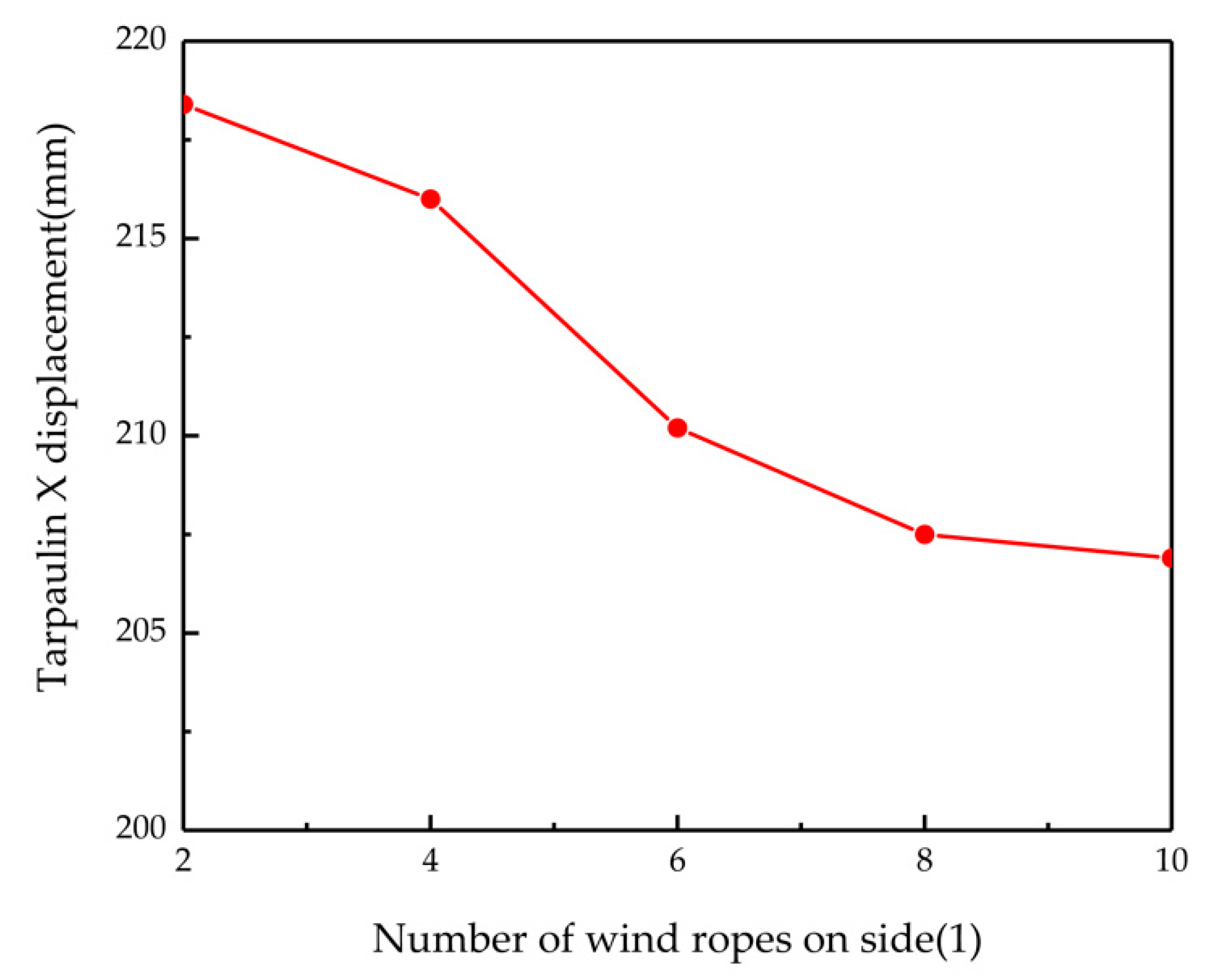

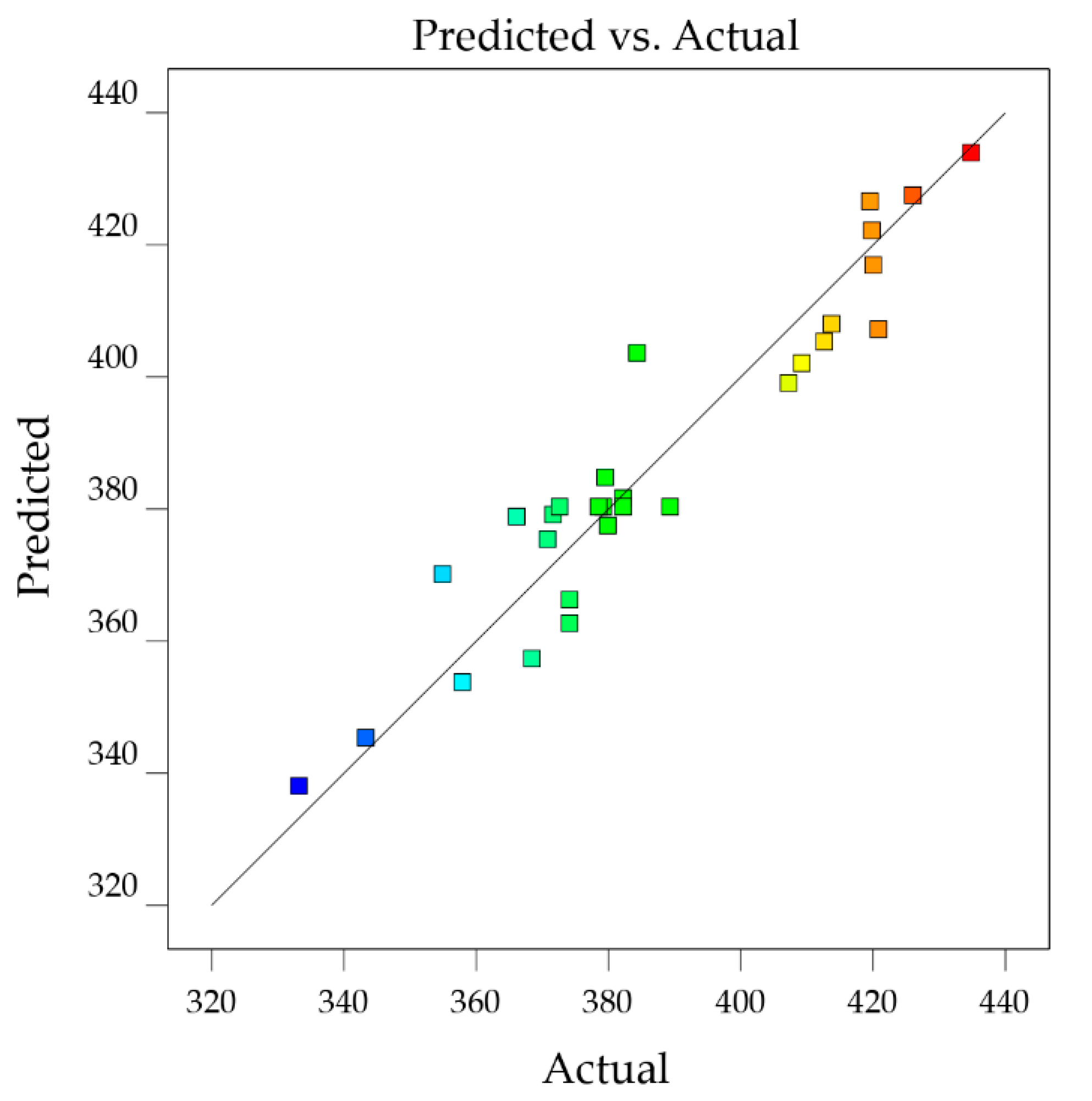
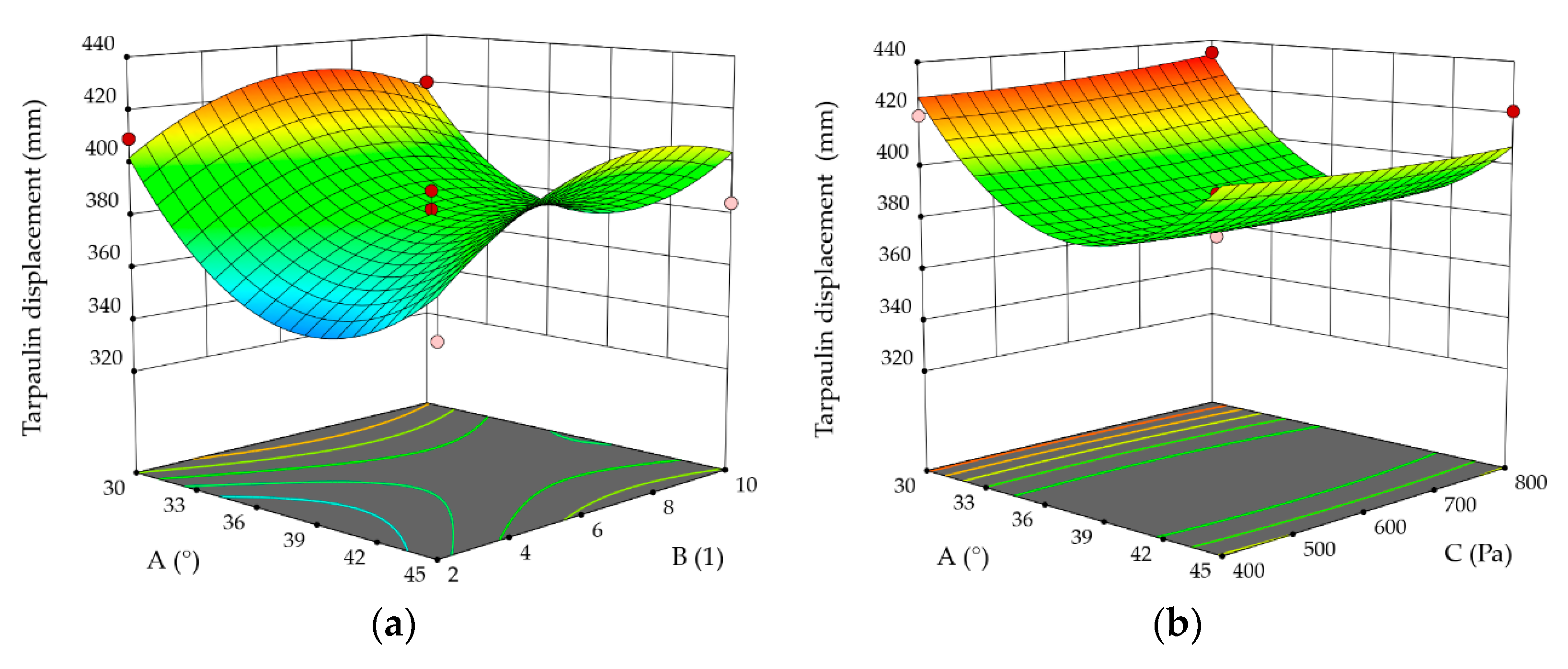
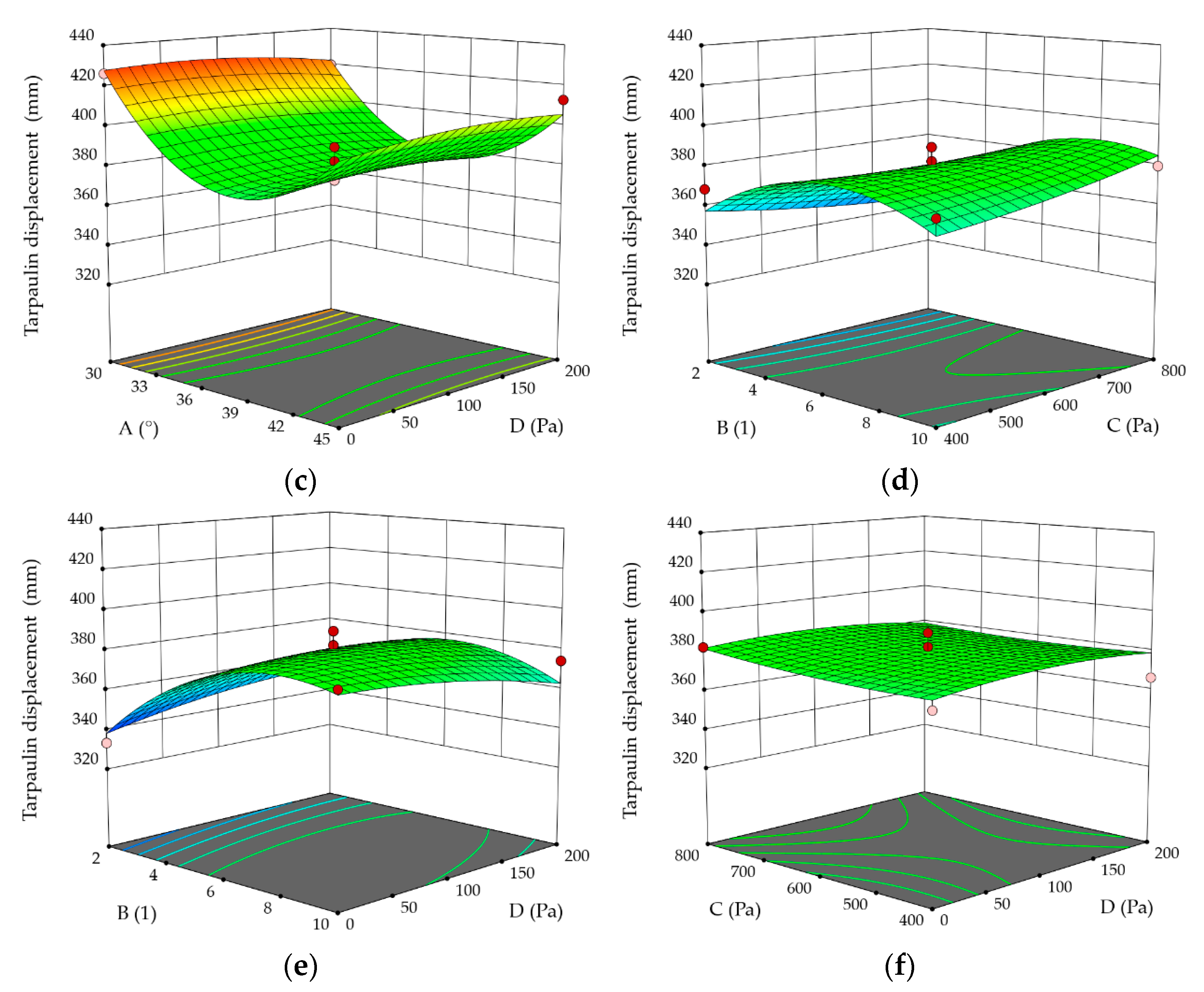
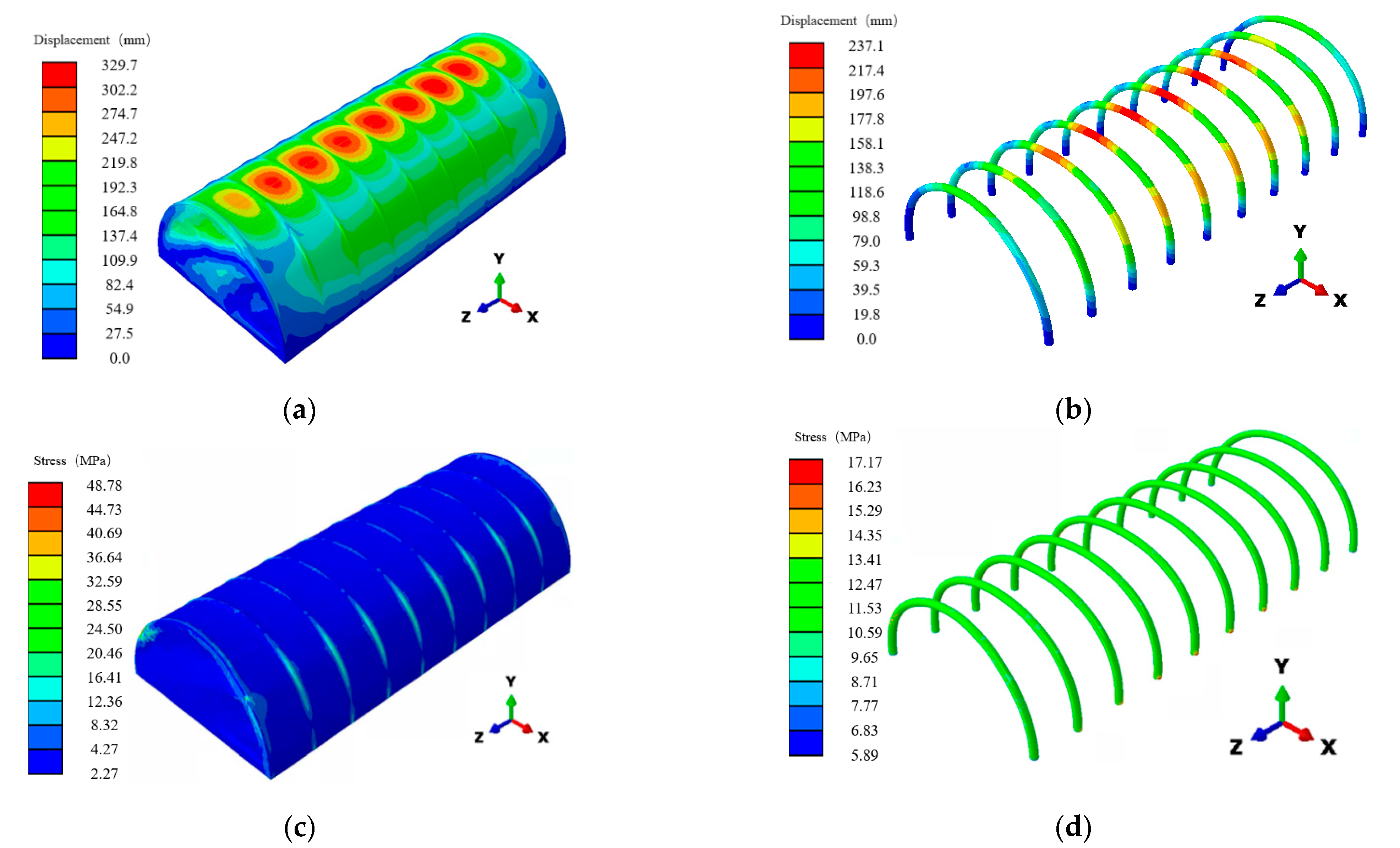
| Part | Thickness (mm) | Density (g/cm3) | Elastic Modulus (GPa) | Poisson’s Ratio | Fracture Strength (MPa) |
|---|---|---|---|---|---|
| Tarpaulin | 0.27 | 1.000 | 0.940 | 0.35 | 178.33 |
| Air rib | 2.60 | 1.069 | 0.470 | 0.32 | 119.47 |
| Parameters | Angle of the Wind Ropes (°) | Number of the Wind Ropes on the Side (1) | Initial Prestress of the Wind Ropes on the End Face (Pa) | Initial Prestress of the Wind Ropes on the Side (Pa) |
|---|---|---|---|---|
| Case 1 | 30/33.75/37.5/41.25/45 | 6 | 400 | 400 |
| Case 2 | 37.5 | 2/4/6/8/10 | 400 | 400 |
| Case 3 | 37.5 | 6 | 0/200/400/600/800 | 400 |
| Case 4 | 37.5 | 6 | 400 | 0/200/400/600/800 |
| Factor Code | Parameter Name | Parameter Value | ||
|---|---|---|---|---|
| −1 | 0 | +1 | ||
| A | Angle of the wind ropes | 30° | 37.5° | 45° |
| B | Number of the wind ropes on the side | 2 | 6 | 10 |
| C | Initial prestress of the wind ropes on the end face | 400 Pa | 600 Pa | 800 Pa |
| D | Initial prestress of the wind ropes on the side | 0 Pa | 100 Pa | 200 Pa |
| Serial Number | A (°) | B (1) | C (Pa) | D (Pa) | Displacement of the Tarpaulin (mm) |
|---|---|---|---|---|---|
| 1 | 30 | 2 | 600 | 100 | 409.2 |
| 2 | 45 | 2 | 600 | 100 | 354.9 |
| 3 | 30 | 10 | 600 | 100 | 420.0 |
| 4 | 45 | 10 | 600 | 100 | 384.3 |
| 5 | 37.5 | 6 | 400 | 0 | 370.8 |
| 6 | 37.5 | 6 | 400 | 200 | 366.1 |
| 7 | 37.5 | 6 | 800 | 0 | 382.2 |
| 8 | 37.5 | 6 | 800 | 200 | 371.6 |
| 9 | 30 | 6 | 400 | 100 | 419.5 |
| 10 | 45 | 6 | 400 | 100 | 413.7 |
| 11 | 30 | 6 | 800 | 100 | 434.8 |
| 12 | 45 | 6 | 800 | 100 | 420.8 |
| 13 | 37.5 | 2 | 600 | 0 | 333.2 |
| 14 | 37.5 | 10 | 600 | 0 | 379.9 |
| 15 | 37.5 | 2 | 600 | 200 | 357.9 |
| 16 | 37.5 | 10 | 600 | 200 | 374.1 |
| 17 | 30 | 6 | 600 | 0 | 426.0 |
| 18 | 45 | 6 | 600 | 0 | 407.2 |
| 19 | 30 | 6 | 600 | 200 | 419.8 |
| 20 | 45 | 6 | 600 | 200 | 412.6 |
| 21 | 37.5 | 2 | 400 | 100 | 368.4 |
| 22 | 37.5 | 10 | 400 | 100 | 374.1 |
| 23 | 37.5 | 2 | 800 | 100 | 343.3 |
| 24 | 37.5 | 10 | 800 | 100 | 379.5 |
| 25 | 37.5 | 6 | 600 | 100 | 379.2 |
| 26 | 37.5 | 6 | 600 | 100 | 382.2 |
| 27 | 37.5 | 6 | 600 | 100 | 378.5 |
| 28 | 37.5 | 6 | 600 | 100 | 372.6 |
| 29 | 37.5 | 6 | 600 | 100 | 389.3 |
Disclaimer/Publisher’s Note: The statements, opinions and data contained in all publications are solely those of the individual author(s) and contributor(s) and not of MDPI and/or the editor(s). MDPI and/or the editor(s) disclaim responsibility for any injury to people or property resulting from any ideas, methods, instructions or products referred to in the content. |
© 2022 by the authors. Licensee MDPI, Basel, Switzerland. This article is an open access article distributed under the terms and conditions of the Creative Commons Attribution (CC BY) license (https://creativecommons.org/licenses/by/4.0/).
Share and Cite
Liu, Y.; Ru, Y.; Li, F.; Zheng, L.; Zhang, J.; Chen, X.; Liang, S. Structural Design and Optimization of Separated Air-Rib Tents Based on Response Surface Methodology. Appl. Sci. 2023, 13, 55. https://doi.org/10.3390/app13010055
Liu Y, Ru Y, Li F, Zheng L, Zhang J, Chen X, Liang S. Structural Design and Optimization of Separated Air-Rib Tents Based on Response Surface Methodology. Applied Sciences. 2023; 13(1):55. https://doi.org/10.3390/app13010055
Chicago/Turabian StyleLiu, Ying, Yi Ru, Feng Li, Lei Zheng, Jun Zhang, Xiaoyang Chen, and Shengchao Liang. 2023. "Structural Design and Optimization of Separated Air-Rib Tents Based on Response Surface Methodology" Applied Sciences 13, no. 1: 55. https://doi.org/10.3390/app13010055
APA StyleLiu, Y., Ru, Y., Li, F., Zheng, L., Zhang, J., Chen, X., & Liang, S. (2023). Structural Design and Optimization of Separated Air-Rib Tents Based on Response Surface Methodology. Applied Sciences, 13(1), 55. https://doi.org/10.3390/app13010055





